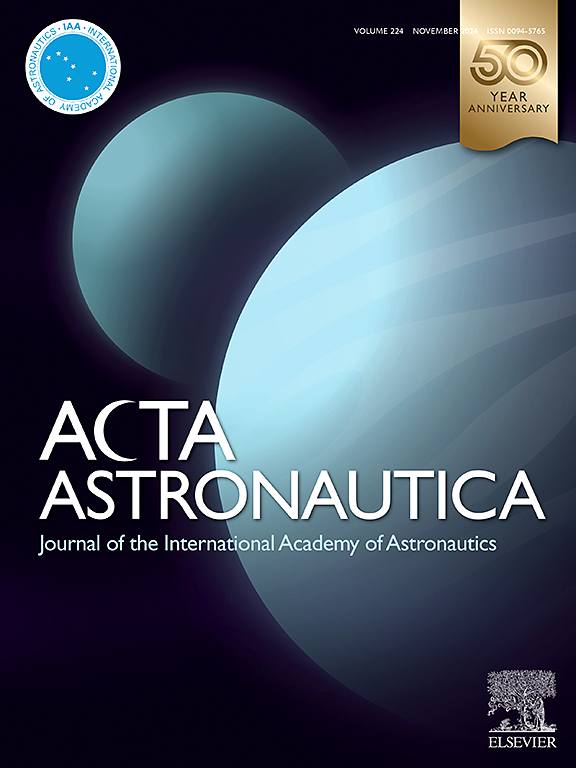修正了包括差动阻力在内的Schweighart-Sedwick卫星相对运动模型的封闭解
IF 3.1
2区 物理与天体物理
Q1 ENGINEERING, AEROSPACE
引用次数: 0
摘要
交会机动是航天飞行中最复杂的机动之一。为了在短时间内近似两个物体之间的相对运动,通常采用线性化运动模型,如著名的Clohessy-Wiltshire模型。为了解决由非球形引力势场引起的这些方程的不准确性,Schweighart和Sedwick建立了一个考虑J2效应的线性相对运动模型。这些方程的闭式解包括两个航天器之间的微分比力,已被许多研究人员广泛应用于研究升力和阻力的微分方法。然而,在处理这些解时,很明显,如果在切向施加特定的微分力δfy,则数值积分解和解析解之间的小偏差会产生,在微分气动力的情况下,这正好对应于主要影响,即微分阻力。这一见解被视为一个机会,通过计算机代数系统Maxima (Maxima, 2023)确定修正的封闭形式解,这是一个用于执行计算机代数计算的软件包。在这个技术笔记中,提出了这些解决方案,并证明了它们的正确性,随后讨论了由于摄动力在相平面上的运动的影响。本说明旨在通过提高未来研究的准确性来为研究领域做出贡献。本文章由计算机程序翻译,如有差异,请以英文原文为准。
Corrected closed-form solutions to the Schweighart–Sedwick satellite relative motion model including differential drag
Rendezvous maneuvers represent one of the most complex maneuvers in spaceflight. To approximate the relative motion between two objects during short time periods, linearized motion models, such as the well-known Clohessy-Wiltshire model, are commonly employed. To address the inaccuracy of these equations arising from the non-spherical gravitational potential field, Schweighart and Sedwick developed a linear relative motion model which accounts for the effect. Closed-form solutions to these equations including differential specific forces between the two spacecrafts have been widely applied by multiple researchers to study the methodology of differential lift and drag.
While working with these solutions, however, it became apparent that small deviations between the numerically integrated and analytical solutions result if specific differential forces are applied in the tangential direction , which in the case of differential aerodynamic forces corresponds exactly to the main influence, namely differential drag. This insight was taken as an opportunity to determine corrected closed-form solutions via the computer algebra system Maxima (Maxima, 2023), a software package for performing computer algebra calculations. In this technical note, these solutions are presented, their correctness is demonstrated and subsequently the effect of the motion in the phase plane due to perturbing forces is discussed. This note is intended to contribute to the field of research by increasing the accuracy of future studies.
求助全文
通过发布文献求助,成功后即可免费获取论文全文。
去求助
来源期刊

Acta Astronautica
工程技术-工程:宇航
CiteScore
7.20
自引率
22.90%
发文量
599
审稿时长
53 days
期刊介绍:
Acta Astronautica is sponsored by the International Academy of Astronautics. Content is based on original contributions in all fields of basic, engineering, life and social space sciences and of space technology related to:
The peaceful scientific exploration of space,
Its exploitation for human welfare and progress,
Conception, design, development and operation of space-borne and Earth-based systems,
In addition to regular issues, the journal publishes selected proceedings of the annual International Astronautical Congress (IAC), transactions of the IAA and special issues on topics of current interest, such as microgravity, space station technology, geostationary orbits, and space economics. Other subject areas include satellite technology, space transportation and communications, space energy, power and propulsion, astrodynamics, extraterrestrial intelligence and Earth observations.
 求助内容:
求助内容: 应助结果提醒方式:
应助结果提醒方式:


